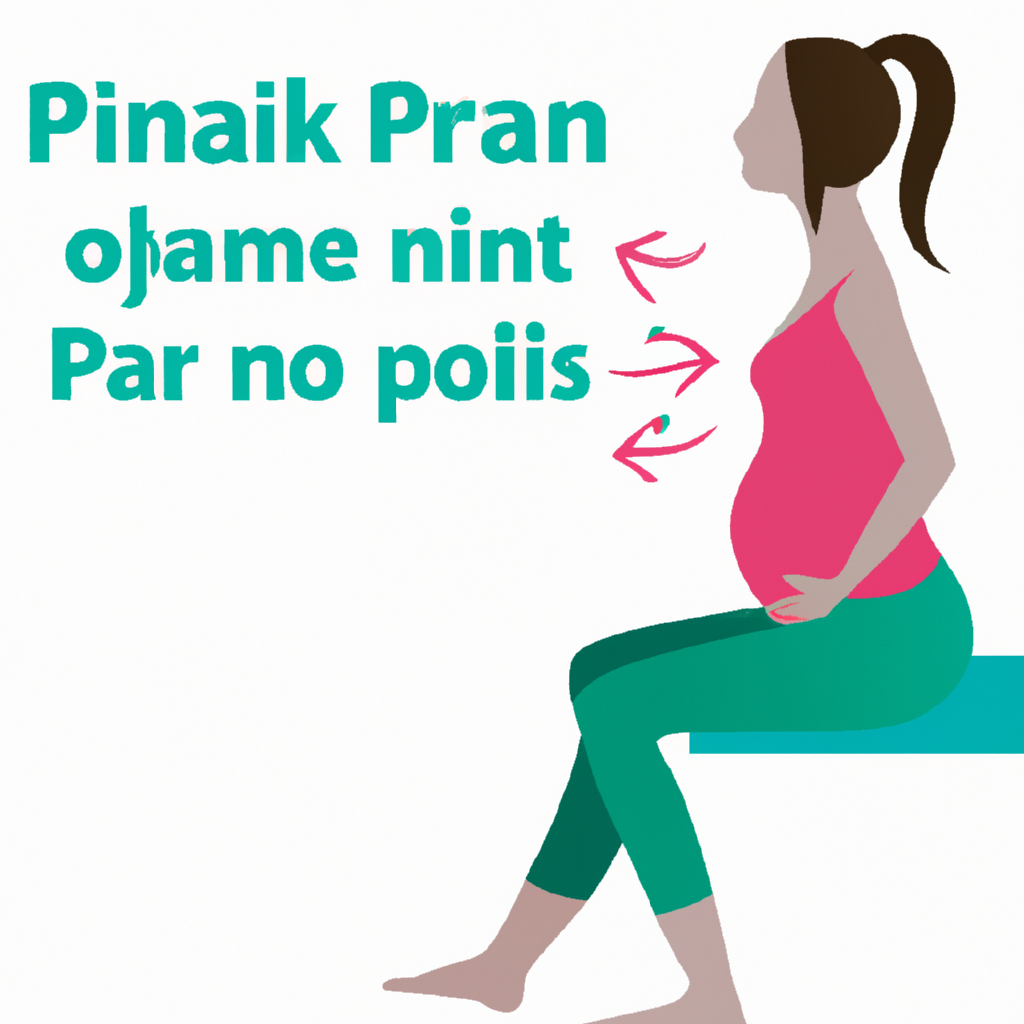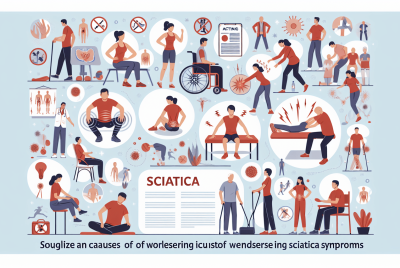Back Pain In Pregnancy: Causes, Relief Tips, And Safe Exercises
Are you experiencing back pain during your pregnancy? You’re not alone! Back pain is a common issue that many expectant mothers face. In this article, we will explore the causes of back pain during pregnancy, provide you with relief tips, and offer safe exercises that can help alleviate your discomfort. Stay tuned to learn more about how you can find relief and enjoy a more comfortable pregnancy journey.
Back Pain in Pregnancy: Causes, Relief Tips, and Safe Exercises
Pregnancy is a beautiful and transformative experience, but it can also bring along its fair share of discomforts. One common issue that many pregnant women face is back pain. As your body adapts to the changes happening inside, your back may bear the brunt of the extra weight and shifting hormones. In this comprehensive article, we will explore the causes of back pain in pregnancy, provide relief tips, suggest safe exercises, cautionary measures, and offer additional tips for back pain relief. Let’s dive in and learn how you can find relief and comfort during this special time.

Causes of Back Pain in Pregnancy
Weight gain
One of the primary causes of back pain in pregnancy is the weight gain that occurs as your baby grows. The additional weight puts strain on your back muscles and spine, leading to discomfort and pain.
Posture changes
As your pregnancy progresses, your body adjusts to accommodate your growing baby. This can cause changes in your posture, with your center of gravity shifting forward. This change in posture can lead to increased pressure on your back and contribute to back pain.
Hormonal changes
During pregnancy, your body produces hormones such as relaxin, which relaxes the ligaments in your pelvic area to prepare for childbirth. However, this hormone can also affect the ligaments and joints in your back, causing them to loosen and potentially leading to back pain.
Abdominal muscle separation
As your baby grows, your abdominal muscles may stretch and separate to accommodate the expanding uterus. This condition, known as diastasis recti, can weaken the core muscles and result in an imbalance that puts strain on the back, causing pain.
Stress and anxiety
Pregnancy can be a time of excitement, but it can also bring about stress and anxiety. Emotional stress can manifest physically and may contribute to muscle tension and increased back pain.
Previous back pain issues
If you have a history of back pain before pregnancy, you may be more prone to experiencing back pain during pregnancy. Pre-existing conditions such as herniated discs or muscle imbalances can be exacerbated by the changes occurring in your body.
Relief Tips for Back Pain in Pregnancy
Now that we understand some of the causes of back pain in pregnancy, let’s explore some relief tips to help alleviate the discomfort and promote a more enjoyable pregnancy experience.
Maintain proper posture
Practicing good posture can help relieve strain on your back. Keep your shoulders back, chin tucked in, and avoid slouching. Use a chair with a supportive backrest and consider using a cushion or rolled-up towel to support the curve of your lower back.
Use proper body mechanics
When lifting objects, bend at your knees and keep the object close to your body. Avoid lifting heavy items whenever possible, and if you must, ask for help to reduce the strain on your back.
Get regular exercise
Engaging in regular, low-impact exercises can help strengthen your back muscles and provide relief from back pain. Consult with your healthcare provider to determine the exercises that are safe for you and your baby. We will explore safe exercises later in this article.
Apply heat or cold therapy
Heat therapy, such as using a warm compress or taking a warm bath, can help relax tense muscles and provide temporary relief. Cold therapy, on the other hand, can help reduce inflammation and numb the area. Experiment with both heat and cold to see which provides the most relief for your back pain.
Wear supportive shoes
Investing in a pair of supportive and comfortable shoes can make a world of difference when it comes to alleviating back pain. Look for shoes with good arch support and cushioning to absorb shock and reduce the strain on your back.
Use a maternity support belt
A maternity support belt can help alleviate the pressure on your back by providing additional support to your growing belly. These belts are designed to distribute weight more evenly and can be particularly helpful during periods of prolonged standing or walking.
Practice relaxation techniques
Stress and tension can contribute to back pain, so it’s important to incorporate relaxation techniques into your daily routine. Deep breathing exercises, guided meditation, and prenatal yoga are just a few examples of relaxation techniques that can help calm your mind and relax your muscles.
Get regular prenatal massages
Prenatal massages can work wonders for relieving back pain. A skilled massage therapist can target the areas of tension and provide relief through various techniques. Make sure to find a therapist who specializes in prenatal massage and always consult with your healthcare provider before starting any new treatments.
Use pillows for support during sleep
Finding a comfortable sleeping position can be a challenge during pregnancy. Experiment with using extra pillows to support your back, abdomen, and between your knees to maintain proper spinal alignment and alleviate pressure points.
Try alternative therapies
In addition to traditional methods, there are alternative therapies that some women find helpful in relieving back pain during pregnancy. Acupuncture, chiropractic care, and prenatal yoga are a few examples of alternative therapies that may provide relief. Always consult with your healthcare provider before trying any new therapies or treatments.
Safe Exercises to Relieve Back Pain in Pregnancy
Engaging in regular exercise during pregnancy can have numerous benefits, including relieving back pain. However, it’s important to choose exercises that are safe and suitable for your condition. Here are some exercises that are generally considered safe for most pregnant women:
Prenatal yoga
Prenatal yoga is a gentle form of exercise that focuses on stretching, strengthening, and relaxation. It helps improve flexibility, promotes proper posture, and can provide relief for back pain.
Swimming or water aerobics
Exercising in water can be incredibly soothing and beneficial, especially for pregnant women experiencing back pain. The buoyancy of water reduces pressure on the joints and supports your body, making swimming or water aerobics a low-impact and safe exercise option.
Walking
Walking is a simple yet effective exercise for pregnant women. It gets your blood flowing, helps maintain cardiovascular health, and can be easily incorporated into your daily routine. Ensure you have proper footwear to provide support and cushioning.
Pelvic tilt exercises
Pelvic tilt exercises target the muscles in your lower back and abdomen, helping to relieve back pain and strengthen your core. Stand against a wall with your feet hip-width apart, and slowly tilt your pelvis forward and upward, then back down. Repeat this movement several times.
Cat-Camel stretch
The cat-camel stretch is another exercise that can help relieve back pain and improve flexibility. Start on your hands and knees, and slowly arch your back up like a cat, then lower it down, lifting your head and chest like a camel. Repeat this movement in a slow and controlled manner.
Prenatal Pilates
Prenatal Pilates focuses on strengthening the core muscles, promoting proper alignment, and improving flexibility. It can help alleviate back pain and prepare your body for the physical demands of labor and delivery. Ensure you find a qualified instructor who specializes in prenatal Pilates.
Low-impact aerobics
Low-impact aerobics classes designed specifically for pregnant women can be an excellent option for relieving back pain. These classes typically incorporate gentle movements that work on cardiovascular health while minimizing stress on your joints.
Modified squats
Squatting can help strengthen your leg muscles and provide support for your back. However, it’s important to modify the exercise to accommodate pregnancy. Stand with your feet shoulder-width apart, and slowly lower your body down as if sitting into a chair, keeping your knees aligned with your ankles. Only lower to a depth that feels comfortable for you.
Side-lying leg lifts
Side-lying leg lifts target the buttocks and outer thigh muscles. Lie on your side with your lower leg slightly bent for support. Lift your top leg to a comfortable height while keeping your hips aligned. Lower your leg back down and repeat on the other side.
Kegel exercises
Kegel exercises, also known as pelvic floor exercises, help strengthen the muscles that support the bladder, uterus, and bowels. These exercises can be done discreetly throughout the day and are beneficial for both during and after pregnancy.
Cautionary Measures and Consultation
While exercise can be incredibly beneficial during pregnancy, it’s essential to take certain precautions and consult with your healthcare provider before starting any new exercise routine. Your healthcare provider knows your specific medical history and can provide personalized advice. Here are some important cautionary measures to keep in mind:
Consult with healthcare provider
Before starting any exercise routine during pregnancy, always consult with your healthcare provider. They can evaluate your individual situation and provide guidance on which exercises are safe for you and your baby.
Avoid high-impact exercises
High-impact exercises, such as running or jumping, can put excessive strain on your joints and may not be suitable during pregnancy. Opt for low-impact activities that are gentler on your body.
Do not overexert yourself
During pregnancy, it’s important not to overexert yourself. Listen to your body and don’t push beyond your limits. If an exercise feels too strenuous or causes pain, stop immediately and consult with your healthcare provider.
Listen to your body
Every pregnancy is unique, and what feels comfortable for one woman may not be suitable for another. Pay attention to your body’s signals and modify or pause exercises as needed. If you experience any unusual pain or discomfort during exercise, consult with your healthcare provider.
Take breaks and rest when needed
Rest is crucial during pregnancy. Make sure to take breaks when needed and listen to your body’s cues for rest and relaxation. Overexertion can lead to increased back pain and may pose risks to your overall health and the health of your baby.
Avoid exercises that cause pain or discomfort
If an exercise causes pain or discomfort, it’s important to avoid it. Pain is your body’s way of telling you that something is not right. Discontinue any exercise that triggers pain and consult with your healthcare provider for advice.

Additional Tips for Back Pain Relief
In addition to the relief tips and safe exercises mentioned earlier, here are some additional tips that can help you find relief from back pain during pregnancy:
Use maternity support products
Maternity support products, such as belly bands or support pillows, can provide additional support to your growing belly and help relieve back pain. Experiment with different products to find what works best for you.
Practice good ergonomics
Maintaining good ergonomics throughout your daily activities can help reduce strain on your back. Avoid activities that require prolonged bending or twisting and make sure to use proper lifting techniques.
Avoid heavy lifting
As your pregnancy progresses, it’s important to avoid heavy lifting whenever possible. Ask for assistance when needed and avoid straining your back with heavy objects.
Try prenatal massages or chiropractic care
Prenatal massages and chiropractic care can provide targeted relief for back pain. Look for therapists who specialize in prenatal treatments and always consult with your healthcare provider before starting any new therapies.
Get enough rest and sleep
Adequate rest and sleep are essential for overall well-being and can contribute to back pain relief. Create a comfortable sleeping environment, maintain a consistent sleep routine, and listen to your body’s need for rest.
Maintain a healthy weight
While weight gain is a natural part of pregnancy, maintaining a healthy weight can help minimize additional strain on your back. Eat a balanced diet, stay hydrated, and discuss healthy weight management strategies with your healthcare provider.
Stay hydrated
Proper hydration is important for your overall health, including the health of your back. Drinking enough water helps maintain hydration, keeps your joints lubricated, and supports the function of your muscles.
Avoid wearing high heels
High heels shift your posture and increase the strain on your back. Opt for comfortable and supportive shoes with lower heels or flats to reduce the risk of back pain.
Use heat or cold therapy
Experiment with heat or cold therapy to find what works best for relieving your back pain. Applying a warm compress or taking a warm bath can help relax muscles, while cold therapy can reduce inflammation. Listen to your body’s response to determine which therapy provides the most relief.
Consider prenatal yoga or Pilates
Prenatal yoga or Pilates classes specifically designed for pregnant women can be highly beneficial for relieving back pain. These classes focus on stretching, strengthening, and relaxation techniques that target common areas of discomfort during pregnancy.
When to Seek Medical Help
While back pain during pregnancy is common, there are certain situations where medical help should be sought. If you experience any of the following symptoms along with back pain, it is important to consult with your healthcare provider:
Severe and persistent pain
If you have severe and persistent back pain that does not improve with rest or home remedies, it is important to seek medical attention. Your healthcare provider can evaluate the underlying cause and provide appropriate treatment.
Pain accompanied by other symptoms
Back pain accompanied by other symptoms, such as fever, vaginal bleeding, or changes in vision, can indicate a more serious condition. Contact your healthcare provider immediately if you experience these symptoms.
Difficulty moving or walking
If you experience difficulty moving or walking due to back pain, it is crucial to consult with your healthcare provider. They can assess your condition and provide guidance on appropriate next steps.
Bladder or bowel dysfunction
Back pain accompanied by bladder or bowel dysfunction, such as difficulty urinating or controlling your bowels, can be a sign of a medical emergency. Seek immediate medical attention if you experience these symptoms.
Numbness or tingling in legs
Numbness or tingling in your legs, along with back pain, can be a sign of nerve compression or other serious conditions. Contact your healthcare provider to discuss your symptoms and determine the appropriate course of action.
Fever or chills
If you have a fever or chills along with back pain, it may indicate an infection or another underlying condition. Contact your healthcare provider, as prompt medical attention may be necessary.

Preventing Back Pain in Pregnancy
While it may not be possible to completely prevent back pain during pregnancy, there are steps you can take to minimize the risk. Here are some preventive measures you can incorporate into your daily routine:
Exercise regularly
Regular exercise, incorporating safe and appropriate exercises for pregnancy, can help strengthen your back muscles and reduce the risk of back pain. Consult with your healthcare provider to develop an exercise plan that suits your needs.
Maintain good posture
Practicing good posture throughout the day can help prevent strain on your back. Be mindful of your posture when sitting, standing, and walking, and make any necessary adjustments to maintain proper alignment.
Use a supportive mattress and pillows
Investing in a supportive mattress and pillows can make a significant difference in preventing back pain. Choose a mattress that provides adequate support for your spine and use pillows to maintain proper spinal alignment during sleep.
Avoid prolonged standing or sitting
Prolonged standing or sitting in one position can lead to back pain. Take regular breaks to move around and change positions throughout the day. If your job requires prolonged standing, consider using a stool or cushioned mat to provide some relief.
Wear low-heeled shoes
When it comes to footwear, opt for low-heeled shoes that provide support and stability. High heels can shift your posture and exacerbate back pain, so it’s best to avoid them during pregnancy.
Avoid lifting heavy objects
As mentioned before, heavy lifting should be avoided during pregnancy. If you need to lift something, make sure to use proper body mechanics and ask for assistance when needed.
Practice stress management techniques
Stress can manifest physically and contribute to back pain. Incorporate stress management techniques into your daily routine, such as deep breathing exercises, meditation, or engaging in activities that bring you joy.
Maintain a healthy weight
Maintaining a healthy weight during pregnancy can help minimize stress on your back. Follow a balanced diet and discuss healthy weight management strategies with your healthcare provider.
Avoid sudden movements or jerks
Avoid sudden movements or jerks that can strain your back unnecessarily. Move slowly and intentionally, and be mindful of your body’s limitations.
Common Myths about Back Pain in Pregnancy
There are several myths surrounding back pain in pregnancy that can lead to misunderstandings and unnecessary discomfort. Let’s debunk some of these common myths:
Myth: Avoiding exercise prevents back pain
Contrary to popular belief, avoiding exercise does not prevent back pain in pregnancy. In fact, regular, low-impact exercise can help strengthen your back muscles and alleviate pain. Consult with your healthcare provider to determine which exercises are safe for you.
Myth: Back pain during pregnancy is normal and not treatable
While back pain is a common complaint during pregnancy, it is not something that should be dismissed as normal and untreatable. There are various relief techniques, exercises, and treatments available that can provide significant relief. Don’t hesitate to seek help and discuss your back pain with your healthcare provider.
Myth: Resting is the best solution for back pain
Rest is important during pregnancy, but relying solely on rest as a solution for back pain may not provide the relief you need. Engaging in regular exercise, practicing good posture, and utilizing various relief techniques are equally important in managing back pain.
Myth: Only women who had previous back pain experience it during pregnancy
While pre-existing back pain conditions may increase the likelihood of experiencing back pain during pregnancy, it is not exclusive to those who had previous back pain. Pregnancy itself can cause changes in your body that contribute to back pain, regardless of your previous health.
Myth: Back pain during pregnancy means having a difficult delivery
Experiencing back pain during pregnancy does not necessarily indicate a difficult delivery. While back pain can be a discomfort, it does not directly correlate with the ease or difficulty of labor and delivery. It’s important to focus on managing your back pain and discussing any concerns with your healthcare provider.

Conclusion
Back pain during pregnancy is a common concern, but it doesn’t have to overshadow the joy of this transformative experience. By understanding the causes of back pain, implementing relief tips, engaging in safe exercises, and taking necessary cautionary measures, you can find relief and enjoy a more comfortable pregnancy. Remember to consult with your healthcare provider, listen to your body, and seek help when needed. With the right strategies and support, you can navigate your pregnancy with minimal discomfort and focus on the excitement of welcoming your little one into the world.




